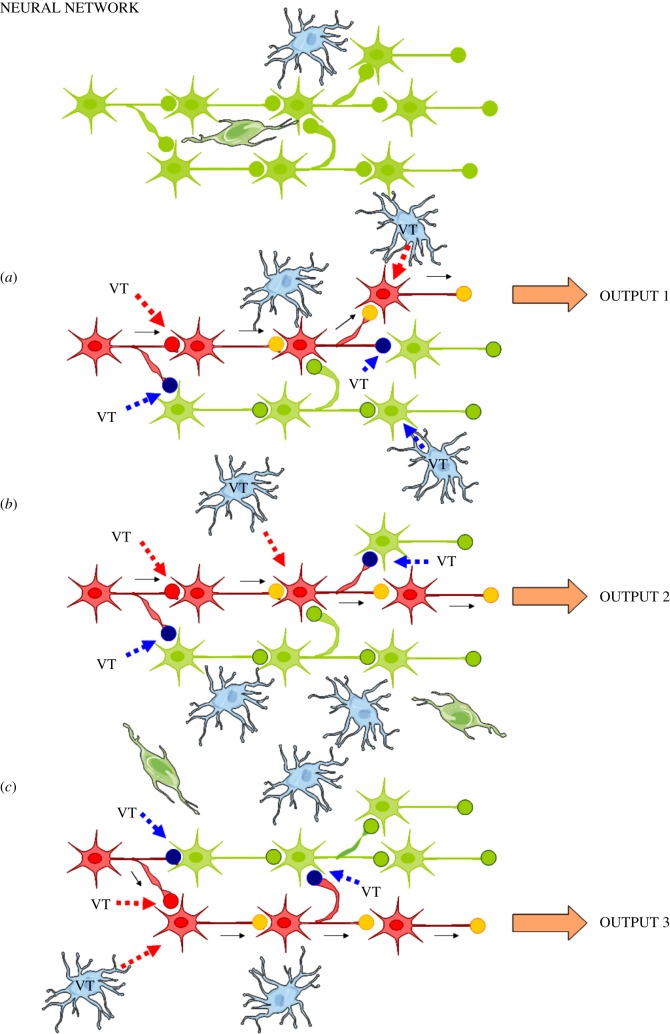Figure 1.
Balancing and integration of VT and synaptic transmission through receptor–receptor interactions. Relevance for the control of brain circuits. Changes in the modulation by VT of synaptic transmission have a fundamental role in the control of brain circuits. The same neural network (upper panel, shown in green) can in this way give different outputs. As shown in this schematic, VT signals via up (in red) and down (in blue) regulation of the synaptic strength of discrete synapses of the glial–neural network can give rise to three types of outputs through changes in the integrative interactions of the VT and synaptic signalling of the network (a–c). The VT signals may significantly arise from glial cells of the local trophic unit, from extrasynaptic release of transmitters of neural afferents to the trophic unit, and from local collaterals and soma–dendrites of nerve cells of the trophic unit. The neural–glial network of trophic units may also be reached by long distance VT signals, e.g. peptides and proteins from CSF and/or surrounding networks. The major mechanism for the balance and integration of VT and synaptic transmission is likely the receptor–receptor interactions in synaptic and extrasynaptic heteroreceptor complexes located both at the prejunctional and postjunctional level and their signalling cascades. Red intermittent arrow, VT signal upregulating synaptic strength; blue intermittent arrow, VT signal downregulating synaptic strength; filled red circle, upregulated synapse; filled blue circle, downregulated synapse; filled yellow circle, active synapse; filled green circle, inactive synapse. The blue cells illustrate glial cells. Active glial cells providing VT signals are labelled VT. (Online version in colour.)

